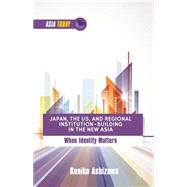Japan and the United States have been uncertain, and sometimes awkward, companions for the countries of Asia in the area of regional institution-building. This study focuses on the origins of these two key Asia-Pacific countries' companionship, whose actions still weigh considerably on success or failure in this realm of regional cooperation. In identifying distinctive behavior patterns by Tokyo and Washington in the first two major cases of regional institution-building, the author argues that the concept of state identity as perceived by policymakers, alongside the structural attributes of the two countries, served as primary determinants of their foreign policy behavior. Further, with its empirically rich examination through an original 'value-action' framework for foreign policy analysis, the study makes a major contribution to the existing identity scholarship in the field of international relations, by articulating not only how identity matters, but also - and importantly - when and under what condition it likely matters.








